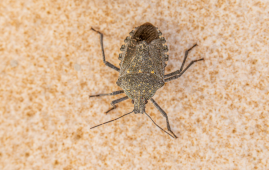

Researchers conducted a genome-wide interaction analysis in a new study that was published in the journal eBioMedicine to look into the possibility that genetic polymorphisms could change the relationship between consumption of fruits, vegetables, and fiber and the risk of colorectal cancer (CRC). They were able to pinpoint two important loci that alter the relationship between fruit and fiber consumption and the risk of CRC.
Context
With around two million incident cases and more than 900,000 deaths from CRC in 2020, the disease is quite common throughout the world. Consuming a lot of fruits, vegetables, whole grains, and dietary fiber is said to lower the risk of colorectal cancer. The risk of colorectal cancer (CRC) is strongly correlated with the consumption of whole grains and dietary fiber, however the correlation between fruit and vegetable intake and CRC risk is still not very high.
At least 200 loci associated with CRC risk have been found by prior genome-wide association studies (GWAS), which can account for up to 35% of heredity. While gene-environment interactions (G × E) may account for some heritability, only a small number of significant gene-diet interactions were found in previous research using small sample sizes and conventional methodologies. The power of these analyses may be increased by new statistical techniques including joint tests and two-step procedures that give priority to single nucleotide polymorphisms (SNPs). Therefore, by using both conventional and contemporary statistical methods on a sizable dataset, the present study’s researchers sought to uncover novel G × E interactions between the risk of colorectal cancer and the consumption of fruits, vegetables, and fiber.
Concerning the study
Up to 45 research from three CRC genetic consortia containing people with European ancestry were included in the study. While case-control studies used cancer-free controls, primarily matched on demographic criteria, cohort studies used nested case-control sets. Colorectal cancer was confirmed in these cases. The consumption of fruits, vegetables, and fiber was examined in total for 69,599, 69,734, and 44,890 participants, respectively. Food frequency questionnaires and diet histories were used to measure dietary consumption, which was usually expressed in grams of total fiber per day and servings of fruits and vegetables per day.
The data were harmonized and presented as quartiles according to study and sex. Hardy-Weinberg equilibrium, sex discordance, and missed call rates were also screened for as part of the genotyping quality control process. Imputation and filtering for minor allele frequency and accuracy were then performed, yielding 7,250,911 SNPs for study. Significant interactions were found by genome-wide interaction scans employing both sophisticated methods such as the two-step approach and the 3-DF joint test, in addition to conventional logistic regression models. In addition, the MiSTi method—short for mixed effects score tests for interactions—was used to do interaction studies for rare variations.
Findings and conversation
Participants with colorectal cancer (CRC) were found to be older, to consume more energy and have a higher body mass index than controls. Additionally, they were more likely to have risk factors such as a family history of CRC and type 2 diabetes. In comparison to controls, it was also discovered that they consumed less fruits, vegetables, and fiber. The intake of fruits, vegetables, and fiber (odds ratio per quartile increase (OR) = 0.79, 0.79, and 0.82) was found to be inversely correlated with the risk of colorectal cancer (CRC) based on meta-analyses. Nevertheless, neither the cancer subsite nor the sex affected the inverse association. Comparing case-control studies to cohort studies, stronger impacts were seen. Furthermore, the study revealed heterogeneity, which was mostly caused by case-control studies.
The rs4730274 locus, which is upstream of the SLC26A3 gene and exhibits an interaction with CRC risk, was found by the 3-DF joint test. For every T allele copy, stratification based on genotype showed a larger inverse relationship between fiber and CRC. Enhancer activity was found in colon tissues according to functional annotation, and the DLD gene had eQTLs (expression quantitative trait loci). These conclusions were further reinforced by interactions between SLC26A3 and DLD expression levels.
The rs1620977 locus, which is located close to the NEGR1 gene, also demonstrated a small interaction with CRC risk and a strong connection with fruit intake. For every G allele copy, there were strong inverse relationships found with higher fruit intake. However, neither the 2-step nor the 3-DF approaches were able to identify any interaction effects for veggies. The results of secondary analyses conducted on uncommon variations and after controlling for extra confounders were not statistically significant, suggesting the strength of the findings.
Large sample sizes, sophisticated statistical techniques, and consistent data quality control across all pooled studies all contribute to the study’s strength. The study’s limitations include its dependence on a single questionnaire to quantify food consumption, its incapacity to examine the kind of fiber, the possibility of biases in case-control studies, and its restricted generalizability to populations with European ancestry.
In summary
To sum up, two interactions between fiber, fruit intake, and CRC risk were found in this investigation, which is the largest G × E study to date. In particular, rs4730274 close to the SLC26A3 gene points to a strong correlation between gut health, inflammation, and colorectal cancer. Additional study is necessary to investigate the clinical significance of the findings and confirm them in a variety of demographics.
For more information: Genome-wide interaction study of dietary intake of fibre, fruits, and vegetables with risk of colorectal cancer, eBioMedicine, https://doi.org/10.1016/j.ebiom.2024.105146
more recommended stories
 Precision Oncology with Personalized Cancer Drug Therapy
Precision Oncology with Personalized Cancer Drug TherapyKey Takeaways UC San Diego’s I-PREDICT.
 Iron Deficiency vs Iron Overload in Parkinson’s Disease
Iron Deficiency vs Iron Overload in Parkinson’s DiseaseKey Takeaways (Quick Summary for HCPs).
 Rising Chagas Parasite Detected in Borderland Kissing Bugs
Rising Chagas Parasite Detected in Borderland Kissing BugsKey Takeaways (At a Glance) Infection.
 Can Ketogenic Diets Help PCOS? Meta-Analysis Insights
Can Ketogenic Diets Help PCOS? Meta-Analysis InsightsKey Takeaways (Quick Summary) A Clinical.
 Ancient HHV-6 Genomes Confirm Iron Age Viral Integration
Ancient HHV-6 Genomes Confirm Iron Age Viral IntegrationKey Takeaways for HCPs Scientists reconstructed.
 Silica Nanomatrix Boosts Dendritic Cell Cancer Therapy
Silica Nanomatrix Boosts Dendritic Cell Cancer TherapyKey Points Summary Researchers developed a.
 Vagus Nerve and Cardiac Aging: New Heart Study
Vagus Nerve and Cardiac Aging: New Heart StudyKey Takeaways for Healthcare Professionals Preserving.
 Cognitive Distraction From Conversation While Driving
Cognitive Distraction From Conversation While DrivingKey Takeaways (Quick Summary) Talking, not.
 Fat-Regulating Enzyme Offers New Target for Obesity
Fat-Regulating Enzyme Offers New Target for ObesityKey Highlights (Quick Summary) Researchers identified.
 Spatial Computing Explains How Brain Organizes Cognition
Spatial Computing Explains How Brain Organizes CognitionKey Takeaways (Quick Summary) MIT researchers.

Leave a Comment